With pretty boys, palm trees, and perennially sunny days, it’s no wonder traffic is packed bumper to bumper in Los Angeles. From the tops of her canyons to the sandy bottoms of her coastal shores, La La Land has always been the most camera-ready, picture-perfect LGBTQ destination in the US. From epic nightlife to gay-friendly beaches to bucket-list worthy events, here’s everything you need to know about taking in the city as an LGBTQ traveler.
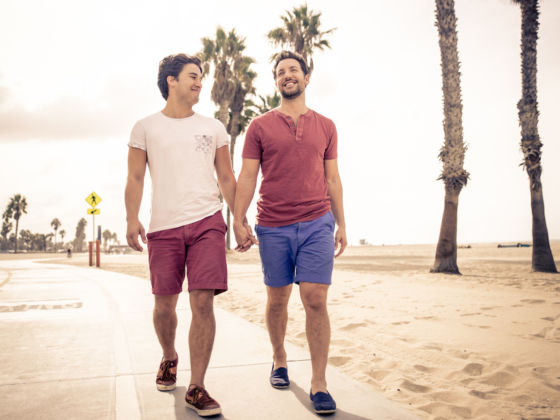
The Ultimate LGBTQ Guide to Los Angeles
Traveling to Los Angeles? Check out Matador’s Los Angeles accommodations guides:
- 18 Unique Airbnbs in Los Angeles’ Trendiest Neighborhoods
- These Are the Best Cannabis-Friendly Airbnbs in Los Angeles
- DTLA Is Home to the City’s Coolest Hotels. Here’s Proof.
- These 9 Neighborhoods Prove You Don’t Need a Car to Enjoy Los Angeles
- 8 Gorgeous LA-Area Hotels With Rooftop Pools, Award-Winning Bars, and Five-Star Service
- Bookend Your Trip to Los Angeles at These Inspiring Hotels Near LAX
LGBTQ History
Like many LGBTQ havens in the US, the Los Angeles queer community started to blossom in the wake of World War II. While the silver screen attracted plenty of queer folk to the city in years to come, Hollywood’s celluloid closet spent a lot of energy censoring homosexuality and forcing queer individuals to lead clandestine lifestyles. Raids on queer bars were frequent in the 1950s and 1960s, and living as an “out” member of society was a dangerous and alienating form of resistance.
Regardless, the City of Angels was still a leader in the early fight for LGBTQ rights. The first lesbian magazine, Vice Versa, was published in 1947 by Lisa Ben, a secretary at the now-defunct RKO Studios. The Mattachine Society, one of the country’s earliest gay organizations, was founded in Silver Lake in 1950. Two major precursors to New York’s Stonewall Riots — the Coopers Donuts riot of 1959, and a peaceful protest against police brutality at The Black Cat in 1967 — are two often-overlooked incidences of LA’s queer community standing up to injustice and discrimination. The Advocate, founded in response to The Black Cat raid in 1967, began as a queer newsletter in ABC Television Studios West, now the site of Prospect Studios.
In 1968, the Metropolitan Community Church — the country’s oldest operating LGBTQ parish — opened its doors on Prospect Avenue. The first cases of what would later be known as AIDS were first reported in Los Angeles by a UCLA researcher, Dr. Michael Gottlieb, in June of 1981. The city has played a significant role in HIV/AIDS research and prevention ever since. Lincoln Park’s Las Memorias AIDS Monument project, founded in 1993, and a soon-to-open monument in West Hollywood, honor the lives of those affected by the epidemic.
Since World War II, the queer community has spread through LA’s sprawling urban environment. While West Hollywood is still the city’s central gayborhood, Downtown LA (DTLA) and Silver Lake also have diverse queer scenes. Much like the rest of the US, as gentrification continues changing the LA landscape, LGBTQ people are integrating into other neighborhoods. You’ll now find plenty of queer residents and establishments from Pacific Palisades to Elysian Park, north toward Malibu, and down into Laguna Beach.
Landmarks
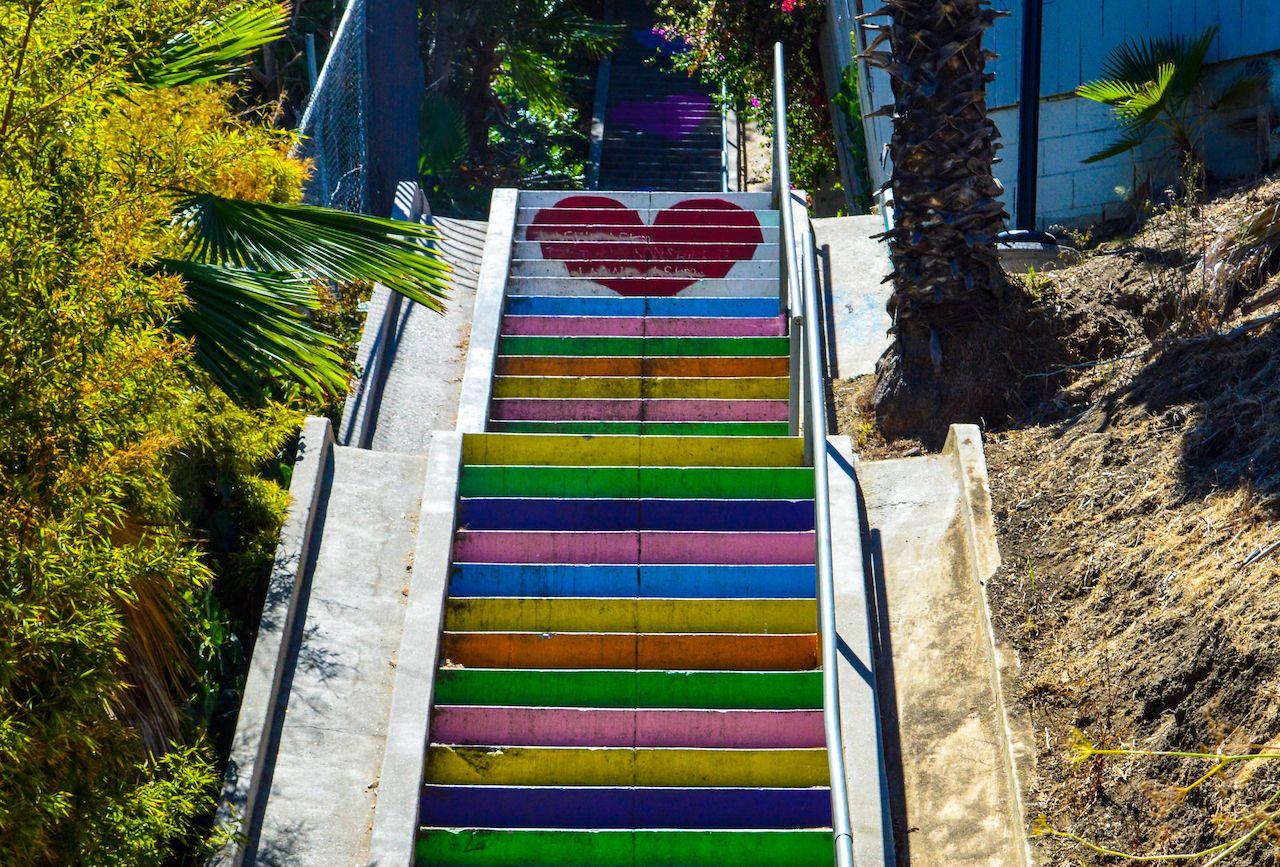
Photo: Lisa Bronitt/Shutterstock
The Mattachine Steps
Harry Hay started the Mattachine Society, one of America’s first LGBTQ rights organizations, in his home next to these steep Silver Lake steps on November 11, 1950. By 1953, the group grew to thousands of members in numerous cities throughout the US The steps, dedicated to Hay in 2012, are a reminder of the strong foundation he helped lay for the subsequent rise of the Gay Liberation Movement. The stairs, a nondescript series of concrete slabs, rise to views of the Silver Lake reservoir and adjoining neighborhood below, now home to a sizeable queer population and lively gay bar scene. It’s a fitting metaphor for Hay’s unglamorous and often overlooked role in the rise of early LGBTQ activism.
Where: 2355 Cove Avenue, Silver Lake
ONE National Gallery and Lesbian Archive
Founded in 1952, this is both the world’s largest research collection of LGBTQ materials and the oldest active queer organization in America. The main repository on West Adams also functions as a community center, cinema, and gallery. The off-site exhibition space, ONE Gallery (626 North Robertson Boulevard), is located in West Hollywood. The gallery hosts exhibitions featuring historical documents and art from the archive’s exhaustive collection.
Where: 909 West Adams Boulevard
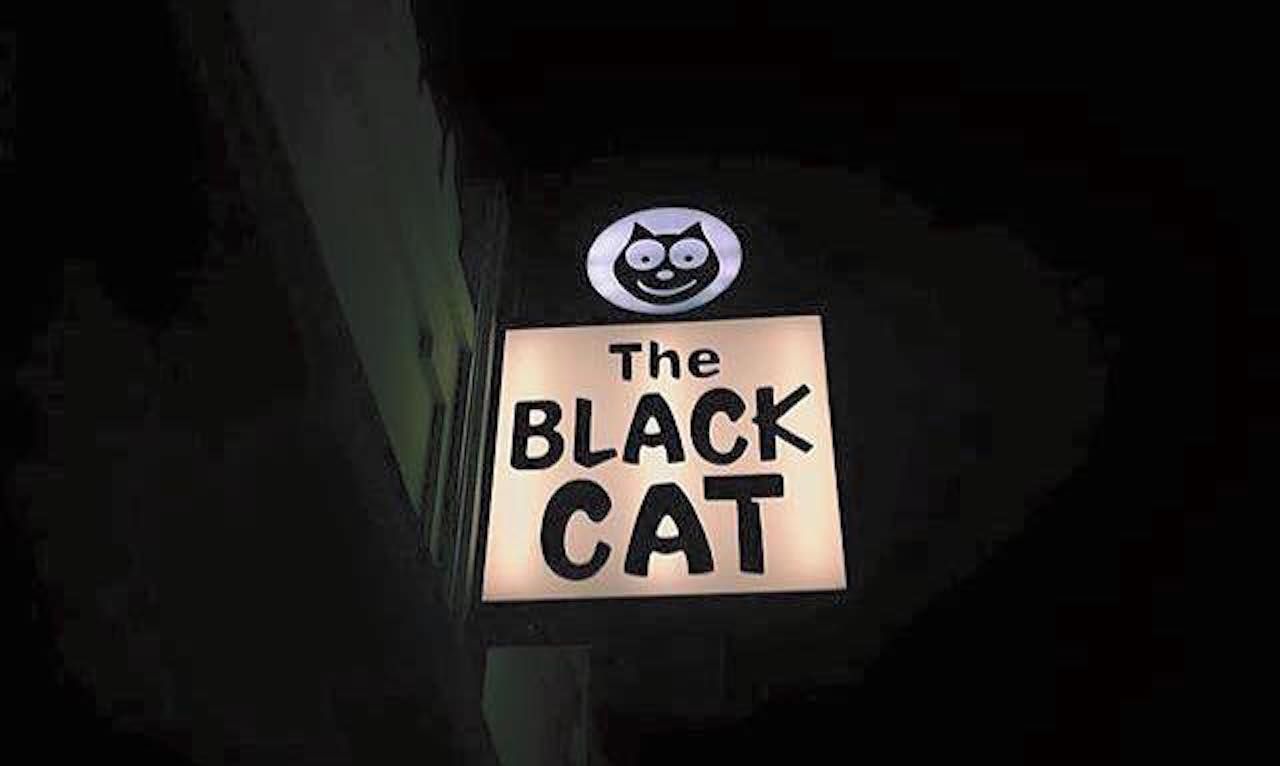
Photo: The Black Cat Los Angeles/Facebook
The Black Cat
The wood-paneled walls and big green booths may seem unassuming to most, but this hallowed hall is home to a critical moment in LGBTQ history. A former gay bar, The Black Cat opened in 1966 and became a popular queer hang in a time when gay establishments were subject to frequent police raids. At the stroke of midnight on New Year’s Eve in 1967, undercover cops subjected The Black Cat to such an attack by beating patrons and violently forcing them into the street. In February of that year, around 200 community members came together to protest the police force’s brutality. A court case followed, calling out lewd conduct allegations of same-sex kissing patrons at The Black Cat as unfounded and discriminatory. The two gay men on trial lost the case and were forced to register as sex offenders, but a step forward was taken in the fight for equality. New York’s infamous Stonewall Riots would happen just over two years later. The site was designated a Los Angeles Historic-Cultural Monument in 2008; a plaque commemorates the 1967 events.
Where: 3909 Sunset Boulevard
Tom of Finland House
The cartoonishly muscular men in Tom of Finland’s erotic cartoons played a pivotal role in the evolution of queer art and gay culture. His hyper-masculine depiction of homoeroticism still has reverberating effects in the queer community today. The Finnish artist’s home away from home, located in Echo Park and designated a Historic-Cultural Monument in 2016, is now a museum that pays homage to his original works. The Tom of Finland Foundation, which runs the estate, is open on Wednesdays from 5:00 PM to 7:00 PM for an art-viewing tea party. A nude figure drawing session takes place once a month on Sundays from 1:00 PM to 4:00 PM. Check the ToFF’s website for more details.
Where: 1419 Laveta Terrace
West Hollywood (WeHo)
Known for its tanned gym bunnies and impeccably groomed pretty boys, this is the city’s most densely concentrated gay area. Centrally located, it’s a great place to stay not only for access to LGBTQ life but for proximity to most of the city’s noteworthy offerings. It’s also, arguably, the most walkable neighborhood in LA.

Photo: The Abbey Food & Bar – West Hollywood/Facebook
The Abbey
LA’s most iconic gay bar had humble beginnings — in 1991, it started as a 1,100-square-foot coffee shop. Today, it’s a 16,000-square-foot multi-hyphenate mega venue that serves as restaurant, dance club, lounge, and community center for the entire LGBTQ community. The space is an indoor-outdoor maze of Gothic-inspired rooms with multiple bars that cater to a mixed crowd of boys, girls, and everything in between. While the venue started banning bachelorette parties in 2012, the bar still sees a more hetero- and tourist-packed crowd than other gay hot spots, particularly on weekends. That’s the curse for being the WeHo’s go-to gay hub — everyone wants in.
Where: 692 North Robertson Boulevard, West Hollywood
Micky’s
Muscle-bound go-go boys and extra-strong drinks are always on the menu at this long-lasting institution, but it’s Monday night’s weekly drag show that makes Micky’s magic. A second home for RuPaul’s Drag Race royalty, the weekly Showgirls review always features top-tier queens lip-syncing to packed crowds. Check the website to see who’s on the roster. You can reserve seats for the show in advance.
Where: 8857 Santa Monica Boulevard, West Hollywood
Fubar
If you’re fed up with the preppy polish of WeHo’s stereotypical crowd, head east to get down and dirty at Fubar. Thursday’s BFD party (Big Fat…you know) is the best night to check out the seedier side of West Hollywood.
Where: 7994 Santa Monica Boulevard, West Hollywood
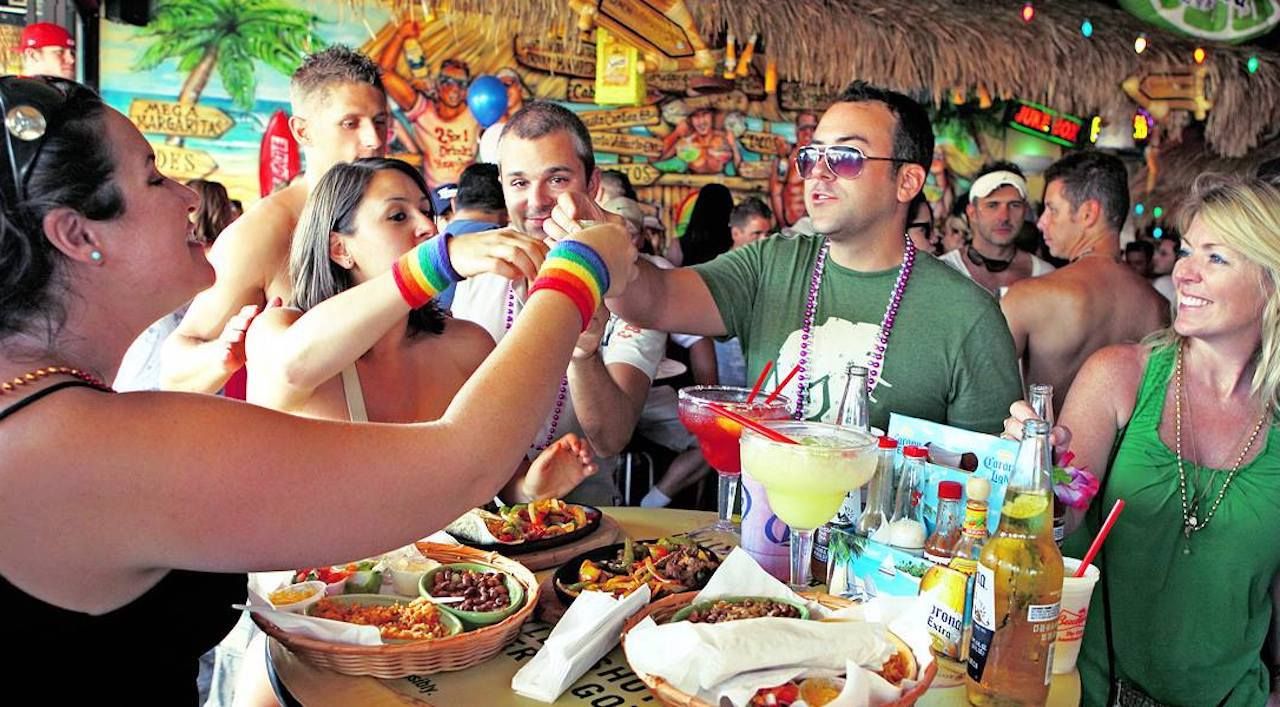
Photo: Fiesta Cantina – WeHo/Facebook
Fiesta Cantina
More Mexican restaurant than actual gay bar, Fiesta Cantina has a spacious rooftop deck, ground-level patio, cheap happy-hour tequila specials, and excellent Margaritas. It’s the best way to get hammered before hitting the more expensive bars nearby.
Where: 8865 Santa Monica Boulevard, West Hollywood
Faultline
This East Hollywood establishment is the antithesis of West Hollywood’s clean-cut crew. Men come here to find leather-clad lads, bears, and dzads (yes, you pronounce the z). Thursday’s Unzipped Underwear party and Sunday’s Legendary Beer Bust and are both well-attended weekly events.
Where: 4216 Melrose Avenue, East Hollywood
Oil Can Harry’s
This Studio City bar has been serving cheap drinks to line-dancing queer cow folk since 1968, making it an LGBTQ landmark. Though there aren’t many other gay spots nearby, heading over the hills to check out this Wild West watering hole is a must if you like kitsch and country.
Where: 11502 Ventura Boulevard, Studio City
Eastside (Silver Lake, Los Feliz, and DTLA)
LA’s Eastside is the Brooklyn of Southern California. Alternative queer crowds call these scenic hills and skyscrapers home — they also tend to be a little more diverse than the well-manicured men of WeHo. Between the hipster cache of Silver Lake and the cultural hub of DTLA, there’s plenty of people and places from which to pick.
Eagle LA
Leather and Levis are life for the attendees of this fetish-friendly gay bar. Much like the same-named Eagle bars around the country, the LA location sports a friendly crew of silver foxes from Silver Lake, alternative hipsters, and hardcore uniform devotees. Every Thursday is bear night; Meat Rack, a biweekly dance party on Saturdays, always attracts a hot, sweaty crowd.
Where: 4219 Santa Monica Boulevard, Silver Lake
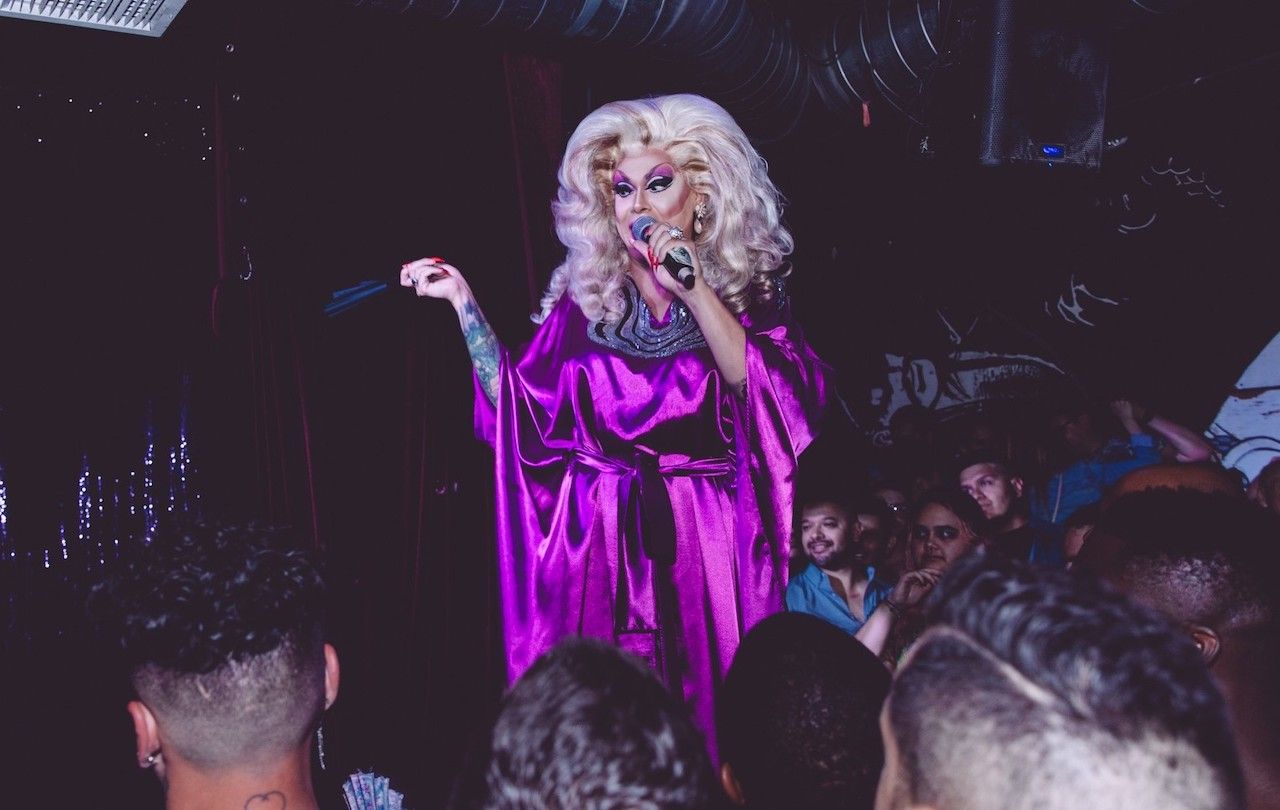
Photo: Precinct DTLA/Facebook
Precinct
The success of Precinct, which opened in 2015, helped solidify DTLA as a queer nightlife destination. The space, a former Department of Corrections facility, now caters to an entirely new kind of riff-raff including drag queens, beefy bears, and boys who like to twirl on the dance floor. The industrial bi-level space offers a little something for everyone, including a reasonably priced food menu.
Where: 357 South Broadway, DTLA
Akbar
This unpretentious neighborhood bar is a hipster haven for the Eastside’s LGBTQ community. The retro-funk decor, lively dance floor, and weekly events — including an open mic night — make this an intimate escape from the large bars packed with West Hollywood’s plucked and polished queens.
Where: 4356 Sunset Boulevard, Los Feliz
Westside (Venice)
Venice isn’t necessarily a queer enclave, but it has a long history as an artsy, open-minded area. A town unto itself, this beachfront community has a laid-back vibe and easy access to long sandy stretches of Pacific coastline.
Roosterfish
A staple on LA’s Westside, Roosterfish was a queer haunt on Abbott Kinney long before it became the Instagrammable millennial paradise it is today. While it may have shuddered briefly in 2016, the bar is back open with an updated menu, vintage furnishings, and an eclectic all-inclusive crowd.
Where: 1302 Abbot Kinney Boulevard, Venice Beach
Lesbian bars in LA
It’s sad to say, but there isn’t a ton of regularly occurring lesbian nightlife options in Los Angeles. While many of the places listed here cater to diverse crowds, the spaces are usually male-dominated. Altar Girl at The Chapel (part of The Abbey), an excellent femme-flavored party, takes place every Wednesday. Jumbo’s Clown Room, a burlesque and strip club, on Hollywood Boulevard is a female owned-and-operated venue that’s often frequented by the lesbian community.
Will Rogers State Beach
Lovingly referred to as Ginger Rogers Beach since the 1950s, the queer section of this sandy Pacific Coast strip is a popular spot for biking, hiking, surfing, and volleyball. If you’re more of a rosé-all-day gay, you can park your towel in front of the ocean and work on your tan lines until the sun goes down. For the gay part of the beach, enter at the intersection of Entrada Drive and Pacific Coast Highway.

Photo: J. J. Johnson/Shutterstock
Venice Beach
Although this isn’t an all-out beachside Boystown, Venice Beach is home to the Pride Flag Lifeguard Tower (located off Brooks Avenue), dedicated to the first openly gay man elected to the LA City Council, Bill Rosendahl. It’s also home to Muscle Beach (1800 Ocean Front Walk), an outdoor gym frequented by bodybuilders. It’s a people-watching playpen for gay men who want to stare longingly from afar.
West Street Beach
West Street Beach is an hour-and-a-half drive from West Hollywood, but if you’re willing to wade through LA’s notoriously bad traffic, the reward is a queer-friendly aqua oasis. The sandy expanse, surrounded by fish-filled tide pools, looks up toward Laguna’s palm tree-studded cliffs and over gentle waves crashing on clam-covered sea rocks. It’s the most scenic gay beach in the greater Los Angeles area.

Photo: LA Pride/Facebook
LA Pride
Los Angeles has the distinction of holding the world’s first officially permitted Pride Parade on June 28th, 1970. (While both New York and Chicago had rallies and marches in 1970, neither were city-sanctioned parades.) Around 50,000 spectators attended the event, which took place to commemorate the 1969 Stonewall Riots. Today, the parade regularly draws crowds of over 400,000. The free event takes place on a Sunday in mid-June along Santa Monica Boulevard between Fairfax and Doheny. There’s also a Pride Festival in West Hollywood Park that boasts three stages with a bevy of live performances. This ticketed event takes place on both Saturday and Sunday. Don’t forget to check out Trans Pride, generally at the Los Angeles LGBT Center in Hollywood, Dyke Day, and separate rallies in other parts of LA, including Venice and Orange County. DTLA Proud, a festival in late August celebrating DTLA’s vibrant queer community, is another worthy LGBTQ Pride event that began in 2016.

Photo: RuPaul’s DragCon/Facebook
DragCon
RuPaul Charles, whose Emmy-winning reality show pits drag queens against one another in a contest of charisma, uniqueness, nerve, and talent, hosts an annual DragCon in LA every spring. The multi-day event features live performances, meet-and-greets with fan favorites, and panels where the queens discuss everything from penises to politics. It’s a dragtastic glitter explosion of all things pop culture. Check the RuPaul’s DragCon website for updates.
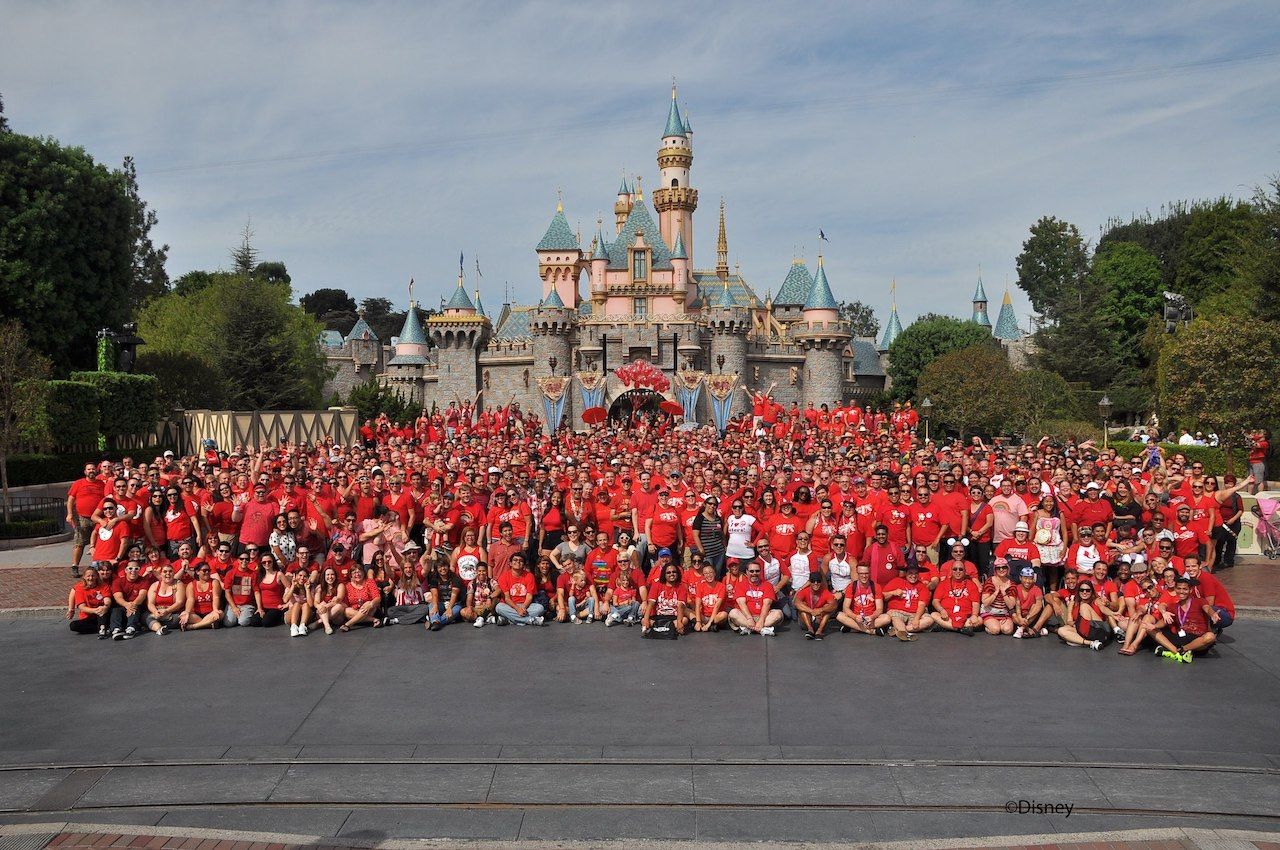
Photo: Gay Days Anaheim/Facebook
Gay Days Anaheim
Every October, LGBTQ folks band together to live their gay Disneyland dreams in a three-day festival at the House of Mouse. When Gay Days Anaheim began in 1998, about 2,500 attended. Today, over 30,000 people participate in the parties, group meals, and other family friendly excursions. Disneyland doesn’t officially present the event, so park officials won’t be able to help you with information. Disneyland is roughly an hour-and-a-half drive from West Hollywood. The park’s long history as the happiest place on earth for many in the queer community makes it fun-packed visit any time of year. Check the Gay Days Anaheim website for more information.
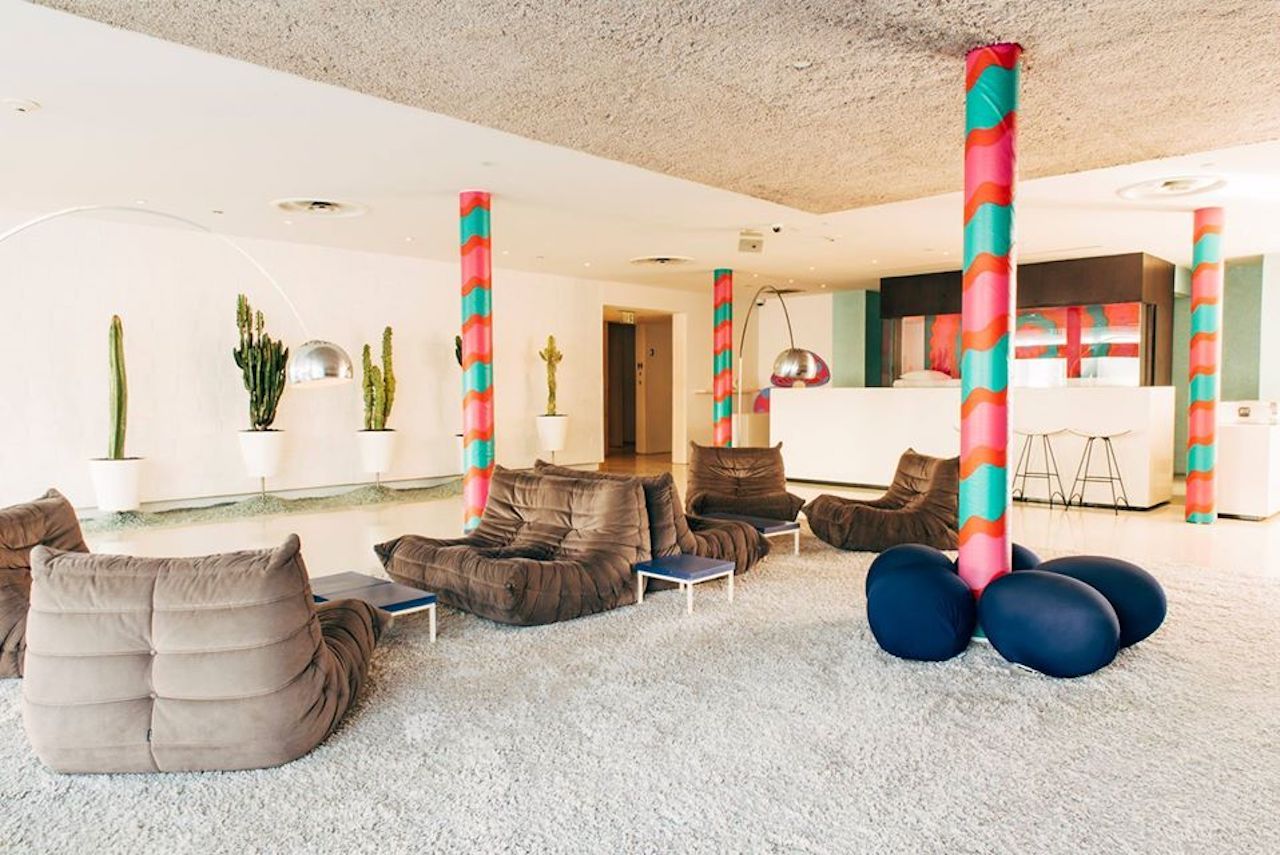
Photo: The Standard, Hollywood/Facebook
The Standard
This swanky-chic mid-century modern hotel in the heart of West Hollywood is a retro hotspot with a decidedly queer vibe. Even if you don’t decide to overnight here, the hotel regularly throws parties on its astroturf pool deck catering to a scantily-clad LGBTQ crew. Check the website for upcoming events. There’s another hotel location in DTLA as well.
Where: 8300 Sunset Boulevard, Hollywood
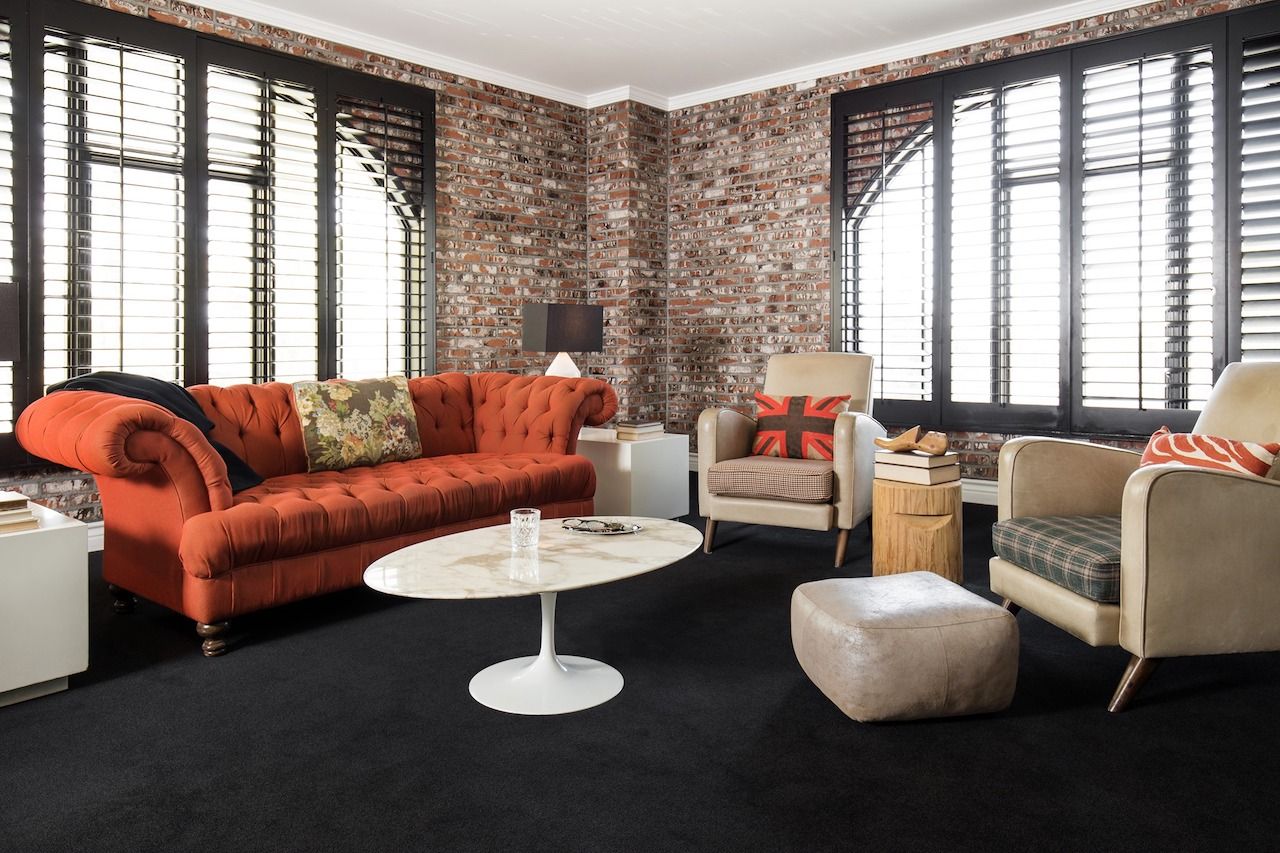
Photo: Palihouse West Hollywood/Facebook
Palihouse
Perfect for an extended stay based out of West Hollywood, this boutique hotel’s lodge-like suites include a full kitchen, washer and dryer, and even an outside terrace.
Where: 8465 Holloway Drive, West Hollywood
Misterb&b
This online homestays platform is much like Airbnb, but hosts and users are usually gay men. You can rent a cheap room in someone’s apartment to entire homes at a variety of prices. Los Angeles has several listings available.
Where: Online